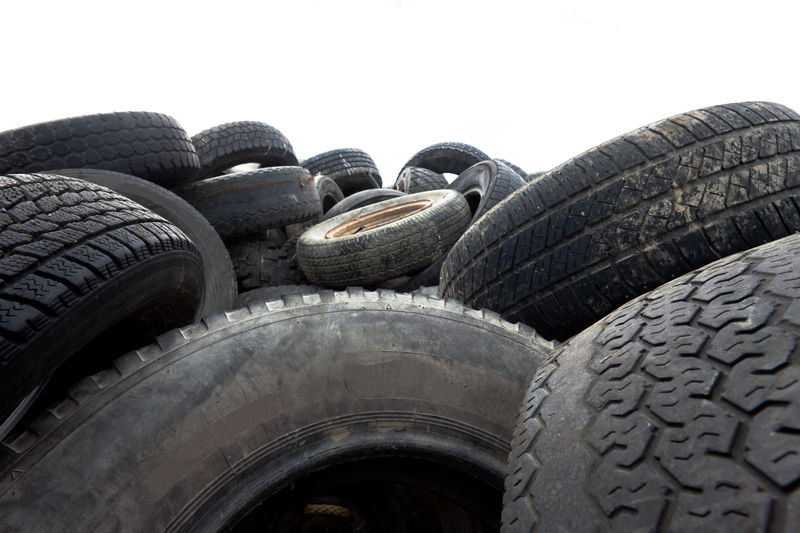The Chronological Tale of Waste Disposal
Waste is an inescapable byproduct of civilization. Humanity's journey with waste disposal mirrors the advance of technology, urban society, and environmental awareness. Understanding how societies have managed--sometimes mismanaged--their waste offers perspective on today's practices and prospects for a more sustainable future. This chronological tale of waste disposal traces the evolution of rubbish management from ancient times to our modern age.

Early Human Habits: Waste in Prehistoric Times
The Dawn of Debris: Paleolithic to Neolithic Eras
- Hunter-Gatherer Societies produced organic waste that composted naturally in the environment.
- Midden Heaps: Archaeological evidence shows ancient humans created "middens," or trash heaps, often containing discarded bones, tools, and shells.
During the prehistoric era, humans lived in harmony with nature. Animal bones, plant matter, and broken stone tools accumulated in middens, hinting at the first communal dumps. Given the biodegradable nature of early refuse, environmental impact was minimal.
The Birth of Settlements and Sanitation Awareness
- With _agriculture's rise_, settlements became semi-permanent, generating more consistent waste streams.
- Early waste disposal involved either burning garbage, burying it, or dumping it at the outskirts.
The emergence of permanent villages changed everything. The proximity of people, animals, and waste gave rise to early disease--forcing societies to adopt rudimentary sanitation practices. Waste was sometimes covered with earth or thrown into rivers, beginning a centuries-long struggle between convenience and hygiene.
The Ancient Age: Innovations and Oversights
Mesopotamian and Egyptian Practices
In the bustling cities of Mesopotamia and Ancient Egypt, waste disposal practices evolved remarkably for their day.
- Mesopotamians developed early drainage systems and designated waste pits.
- The Egyptians practiced street sweeping and had the first recorded waste containers.
- Solid and Organic Waste was routinely buried or burned, often outside city limits.
*These ancient civilizations* recognized the danger of accumulating filth. In some city-states, rules prohibited dumping trash in public areas--a precursor to modern municipal waste ordinances.
Greece and Rome: Toward Systematization
- Romans are famous for their cloaca maxima, a massive sewer that drained waste from the heart of Rome.
- Both Greeks and Romans had waste removal laws--those who dumped garbage in the streets faced fines.
The Roman Empire stands out for its complex sanitation systems. Besides sewers, household slaves were often tasked with hauling refuse to municipal dumps. However, even such advancement could not keep up with growing urban populations, often resulting in heaps of rubbish piling up in the poorer districts.
Medieval Modesty and Missteps
Cities Swell, Waste Worsens
As European towns expanded, waste disposal methods lagged behind. People emptied chamber pots into streets, and waste ran freely through open gutters.
- Night soil men collected human waste, sold as fertilizer in the countryside.
- Animals roamed cities, further contributing to unsanitary conditions.
- Medieval regulations tried, often unsuccessfully, to keep streets clean.
This era's lack of organized garbage removal led to stench, rats, and outbreaks of bubonic plague. Nevertheless, rudimentary forms of recycling, like rag and bone collecting, began during this time.
Asian Advances in Waste Management
- In medieval China and Japan, urban officials imposed strict waste disposal rules.
- Innovative composting and closed latrine systems kept cities relatively clean.
East Asian cities often outperformed their European counterparts, understanding the link between waste control and public health much earlier. Human waste was considered an asset, carefully collected for agricultural use.
The Industrial Revolution: A Rubbish Explosion
The Growth of Filth in the Industrial Age
The 18th and 19th centuries witnessed unparalleled urbanization, mass manufacturing, and with them, an exponential rise in waste.
- Large-scale industry introduced new forms of waste--chemical byproducts, slag, and synthetic packaging.
- Horse-drawn carts began regular collections, a precursor to today's garbage trucks.
- Public health boards emerged, tying waste to outbreaks of cholera and typhoid.
The Great Stink of London in 1858, caused by raw sewage in the Thames, forced lawmakers to build modern sewer systems. In New York, innovations included primitive incinerators and the invention of pail closets.
The Rise of the Modern Landfill and Incineration
- By the late 19th century, the concept of the sanitary landfill was born--waste was buried layer by layer, reducing smell and disease.
- Incineration plants appeared, burning trash to reduce volume but also releasing pollutants.
This period was a turning point: society began to view waste management as essential to urban survival, laying the groundwork for 20th-century systems.
The Twentieth Century: Toward Modern Waste Disposal
Standardization and Science
- Municipal waste collection became routine in industrialized nations.
- Cities adopted garbage trucks, standardized bins, and laws mandating proper disposal.
- Science exposed the dangers of chemicals, leading to regulated landfills and hazardous waste protocols.
- The term "solid waste management" entered the public vocabulary.
*Recycling* got a boost from wartime necessity in WWII, when materials like metal, paper, and rubber became precious commodities. Later, the environmental movement of the 1960s and 70s spurred new interest in reducing waste and controlling pollution.
Plastic and Packaging Problems
- Plastic, invented in the early 1900s, changed everything: it was cheap, durable--and very difficult to dispose of.
- Landfills filled with non-biodegradable goods, oceans became polluted with "white pollution."
By the end of the century, waste disposal became a global issue. Governments, facing overflowing tips and environmental disasters, introduced recycling targets, incineration with energy recovery, and stringent regulations on electronics and toxic substances.
Modern Waste Management: Innovations and Challenges
The Age of The 3Rs: Reduce, Reuse, Recycle
- Facilities now separate recyclable material from true landfill waste as a matter of course.
- Composting programs have returned, diverting organic matter from dumps.
- Waste-to-energy plants convert rubbish to electricity, lessening landfill reliance.
Today, waste disposal solutions are high-tech and multifaceted. Sensors and machine learning optimize collection routes, while cities experiment with "pay-as-you-throw" schemes. New regulations ban single-use plastics and promote zero-waste lifestyles.
Concerns of the 21st Century
- Electronic waste (e-waste) is now one of the fastest-growing waste streams, full of toxic substances and valuable metals.
- Developing countries struggle with insufficient trash infrastructure, often suffering most from pollution.
- Microplastics and chemical residues raise alarms about long-term environmental and health effects.
In our pursuit of convenience, we have created vast systems for getting rid of garbage--but not always sustainably. The push for a circular economy, where waste becomes a resource, is more urgent than ever.

Future Prospects: Toward a Circular and Sustainable Society
From Linear to Circular
- New technologies focus on "closing the loop," converting rubbish back into raw materials or energy.
- Biodegradable plastics and packaging are under rapid development.
- Zero-waste cities aim for landfill avoidance, maximizing upcycling and reuse.
Waste disposal systems continue to adapt, striving to balance human needs with environmental integrity. Advances in waste-to-fuel technologies, AI sorting, and international collaboration hint at a future where the very concept of "waste" may be obsolete.
Societal Roles and Responsibilities
- Government policies, business innovation, and public participation are all crucial.
- Education around consumption and disposal habits needs ongoing support.
The chronology of waste disposal is still being written. Every day, individual and collective choices determine whether we create a cleaner world or compound centuries of debris. The next chapter depends on our commitment to _rethinking, reducing, and reclaiming_ what we throw away.
Conclusion: Lessons from the Past, Visions for the Future
From ancient middens to advanced recycling facilities, the history of waste disposal illustrates both ingenuity and oversight. It is a tale of progress incarnate, highlighting the complex interplay between technology, urbanization, and environmental stewardship. Our challenge remains: to integrate all that we've learned into more effective, equitable, and eco-friendly waste management practices for the generations yet to come.
What will the future chapter of the waste disposal story entail? The answer lies in our continued innovation, increased responsibility, and unwavering commitment to planetary health.